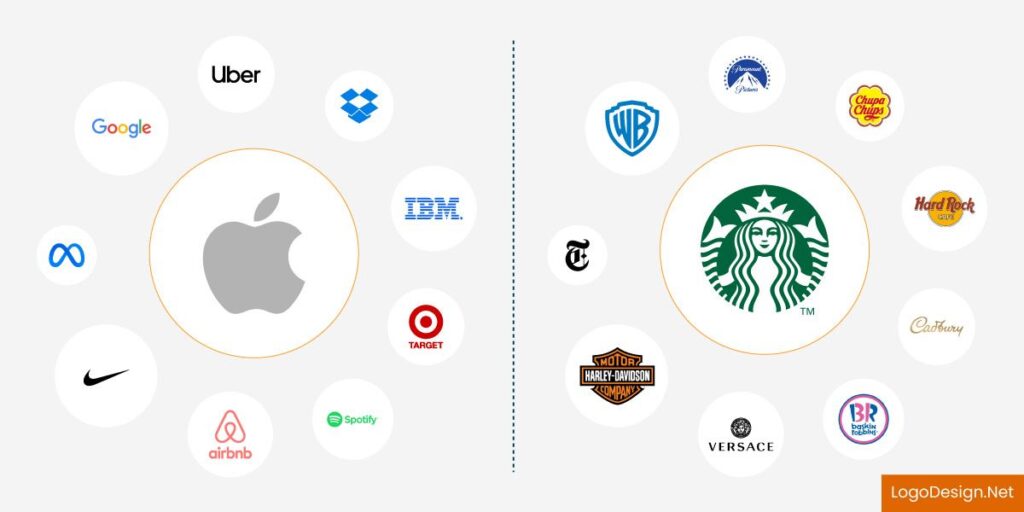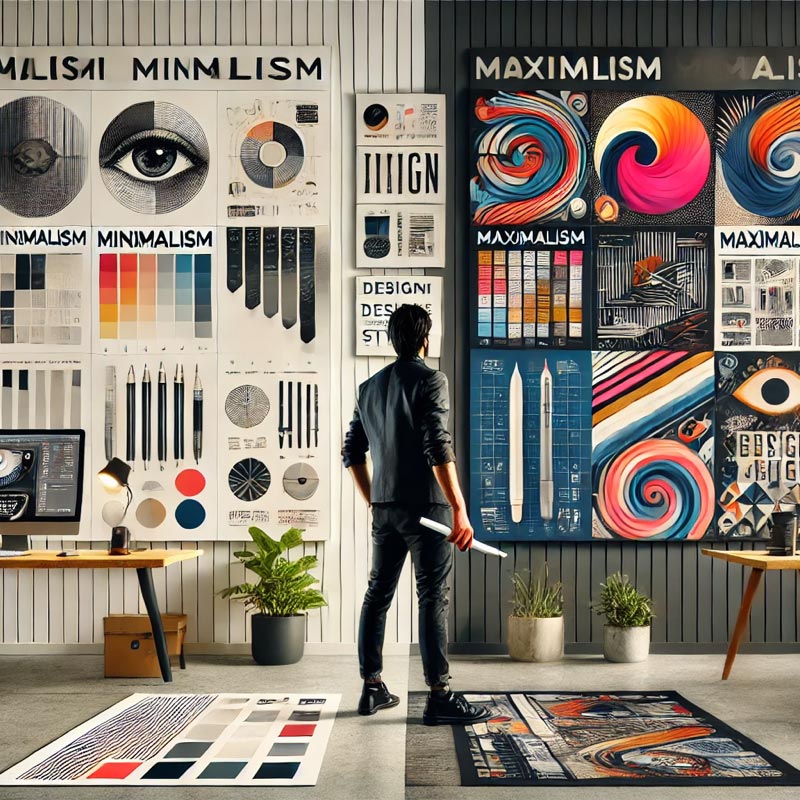Minimalist vs. Maximalist Design: Which Works for Your Brand?
Minimalist vs maximalist design – When building a brand, design is more than just aesthetics, it’s a visual language that communicates your personality, values, and mission. Two popular approaches dominate the creative world: minimalist design and maximalist design. While one embraces simplicity and clarity, the other celebrates abundance and bold expression.
So, which works best for your brand? Let’s explore both styles, their advantages, and how to choose the right one for your business.
What is Minimalist Design?
Minimalist vs maximalist design – Minimalist design is all about simplicity, clean lines, and a focus on essential elements. Inspired by the principle of “less is more,” it strips away unnecessary details and focuses on functionality, negative space, and limited color palettes.
Key Characteristics of Minimalist Design:
– Simple typography
– Neutral or monochrome color schemes
– Ample white space
– Focus on core messaging without distractions
This style works exceptionally well for brands that want to project professionalism, clarity, and modern elegance.
What is Maximalist Design?
Minimalist vs maximalist design – On the other side of the spectrum, maximalist design thrives on richness, complexity, and expressive visuals. It’s the “more is more” philosophy—vibrant colors, bold patterns, layered textures, and intricate details that demand attention.
Key Characteristics of Maximalist Design:
– Rich, contrasting color palettes
– Multiple design elements layered together
– Playful typography and illustrations
– A sense of abundance and energy
Maximalism is perfect for brands that want to convey personality, creativity, and uniqueness.
The Psychology Behind Minimalism and Maximalism
Your choice of design style has a psychological impact on how your brand is perceived.
– Minimalism triggers feelings of calmness, order, and trust. It’s often associated with luxury brands, tech companies, and wellness industries.
– Maximalism evokes excitement, creativity, and individuality. It resonates with artistic brands, fashion houses, and lifestyle products that aim to stand out.
Understanding the emotional triggers behind each style helps you align your brand’s visual identity with your target audience’s preferences.
Pros and Cons of Minimalist Design
Pros:
– Easy to read and navigate
– Timeless and adaptable
– Faster loading times for websites
– Creates a sense of sophistication
Cons:
– Can feel too plain if not executed well
– Limited opportunity for visual storytelling
– May not suit brands with highly dynamic personalities
Pros and Cons of Maximalist Design
Pros:
– Bold and attention-grabbing
– Encourages creativity and expression
– Allows for rich storytelling through visuals
– Differentiates your brand in crowded markets
Cons:
– Can overwhelm viewers if overdone
– Risk of visual clutter and confusion
– May date quickly if design trends change

Which Style Works for Your Brand?
Minimalist vs maximalist design – Choosing between minimalist and maximalist design depends on your brand personality, target audience, and business goals.
Ask yourself:
1. What emotions do I want to evoke?
Minimalism evokes trust and calmness; maximalism evokes excitement and curiosity.
2. Who is my audience?
Younger, trend-driven audiences may appreciate maximalism, while corporate or luxury markets may prefer minimalism.
3. What is my brand story?
If your story is straightforward, minimalism might work best. If it’s rich and layered, maximalism may be more effective.
Blending Both Styles
Some brands successfully blend minimalism and maximalism by using:
– Minimalist layouts with maximalist color schemes
– Simple typography paired with bold imagery
– Clean designs with occasional bursts of creative detail
This hybrid approach can capture the best of both worlds clarity without losing character.
Case Studies
– Apple (Minimalist) – Uses sleek, uncluttered designs with plenty of white space to emphasize product quality.
– Gucci (Maximalist) – Celebrates bold prints, bright colors, and eclectic visuals to reinforce its luxury and creative edge.
– Airbnb (Balanced) – Combines minimalist layouts with colorful photography to create a warm yet professional feel.
Final Thoughts
Minimalist and maximalist design are not just trends, they’re strategic branding tools. Minimalism offers clarity and timeless elegance, while maximalism brings personality and vibrancy. The key is to choose the style that aligns with your brand’s values, resonates with your audience, and supports your long-term goals.
Whether you go minimal, maximal, or somewhere in between, make sure your design communicates the right message because in branding, visuals speak louder than words.
Table of Contents
Read also: The Science of Typography: Choosing Fonts That Influence Behavior

